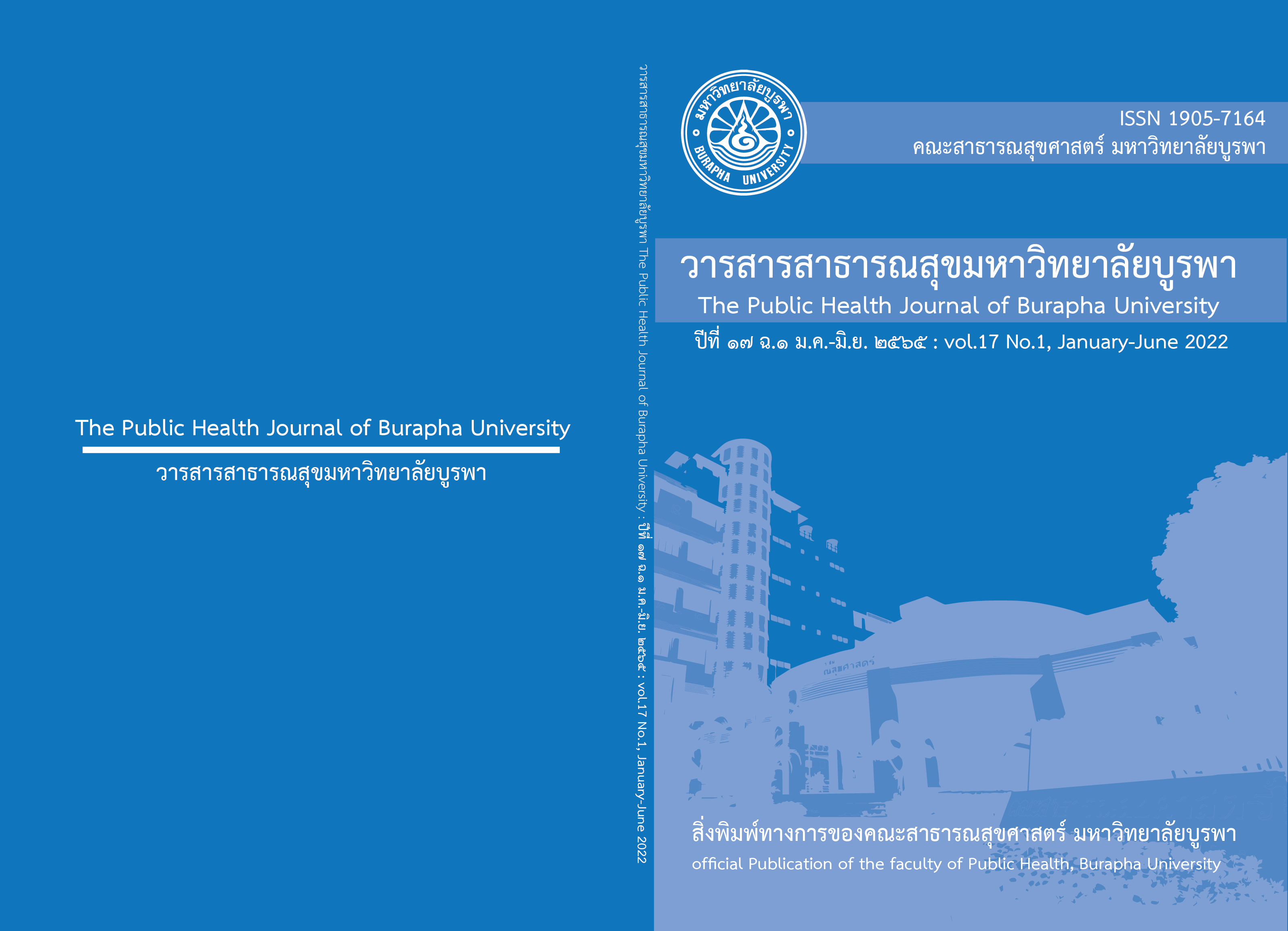นิเวศระบาดวิทยาและพลวัตการแพร่ไวรัสเด็งกี่ -
Main Article Content
บทคัดย่อ
ไวรัสเด็งกี่ทั้ง 4 ซีโรไทป์ เป็นเชื้อก่อโรคสำคัญที่สุดในกลุ่มอาร์โบไวรัสที่มียุงลายเป็นพาหะและเป็นสาเหตุของโรคที่เกิดจากไวรัสเด็งกี่ ได้แก่ ไข้เด็งกี่ ไข้เลือดออกเด็งกี่ และไข้เลือดออกช็อคเด็งกี่ ไวรัสเด็งกี่สามารถแพร่กระจายในวงกว้างโดยเฉพาะในเขตร้อนชื้นของโลกรวมถึงประเทศไทย และทำให้ประชากรโลกเกือบหนึ่งในสามมีความเสี่ยงต่อการติดเชื้อ การแพร่ไวรัสเด็งกี่ของทั้งวัฏจักรป่าและวัฏจักรเมืองนั้นเป็นพลวัตตามธรรมชาติ ทั้งสองวัฏจักรนี้แตกต่างกันโดยสิ้นเชิงทางนิเวศวิทยาและระบาดวิทยาเป็นผลที่เกิดขึ้นจากกระบวนการเปลี่ยนแปลงสภาพนิเวศสิ่งแวดล้อมที่มีอิทธิพลต่อประชากรยุงลาย กระบวนการทางวิวัฒนาการและความหลากหลายของไวรัสเด็งกี่และชนิดสัตว์เจ้าบ้านจำเพาะ และกระบวนการเปลี่ยนแปลงที่เกิดขึ้นจากกิจกรรมต่าง ๆ ของมนุษย์ ความเข้าใจเกี่ยวกับความซับซ้อนทางนิเวศระบาดวิทยาของไวรัสเด็งกี่จึงเป็นพื้นฐานสำคัญสำหรับบุคลากรสาธารณสุขในระดับต่างๆ ที่เกี่ยวข้องกับการดำเนินงานเฝ้าระวัง ป้องกัน ควบคุมโรคที่เกิดจากไวรัสเด็งกี่ในหลายพื้นที่ซึ่งมีความซับซ้อนทางนิเวศระบาดวิทยาแตกต่างกันอย่างมากของประเทศไทย
Article Details

อนุญาตภายใต้เงื่อนไข Creative Commons Attribution-NonCommercial-NoDerivatives 4.0 International License.
เอกสารอ้างอิง
2. Gubler DJ. Epidemic dengue/dengue hemorrhagic fever as a public health, social and economic problem in the 21st century. Trends Microbiol 2002; 10: 100-3.
3. Guzman MG, Halstead SB, Artsob H, Buchy P, Farrar J, Gubler DJ, et al. Dengue: a continuing global threat. Nat Rev Microbiol 2010; 8(120): S7-S16.
4. Simmons CP, Farrar JJ, Chau NV, Wills Bridget. Dengue. New Eng J Med 2012; 366: 1423-32.
5. NIAID. Emerging Infectious Diseases/Pathogens. 2016. https://www.niaid.nih.gov/research/emerging-infectious-diseases-pathogens [accessed 15.08.16].
6. ประกาศกระทรวงสาธารณสุข เรื่อง รายการเชื้อโรคที่ประสงค์ควบคุมตามมาตรา 18 แห่งพระราชบัญญัติเชื้อโรคและพิษจากสัตว์ พ.ศ. 2558 http://blqs.dmsc.moph.go.th/assets/Bpat/PATratchakitcha182561.pdf
7. ประกาศกระทรวงสาธารณสุข เรื่อง ชื่อและอาการสําคัญของโรคติดต่อที่ต้องเฝ้าระวัง พ.ศ. 2559 ตามมาตรา 4-6 แห่งพระราชบัญญัติโรคติดต่อ พ.ศ. 2558 http://law.ddc.moph.go.th/file/lawgcd/003.2.pdf
8. ประกาศกระทรวงสาธารณสุข เรื่อง เพิ่มเติมชื่อโรคติดต่อต้องแจ้งความhttp://www.ratchakitcha.soc.go.th/DATA/PDF/2552/E/106/16.PDF
9. Kraemer MUG, Sinka ME, Duda KA, Mylne AQN, Shearer FM, Barker CM, et al. The global distribution of the arbovirus vectors Aedes aegypti and Ae. albopictus. eLife 2015; 4: e08347.
10. Vasilakis N, Weaver SC. The history and evolution of human dengue emergence. Adv Virus Res 2008; 72: 1-76.
11. Weaver SC. Host range, amplification and arboviral disease emergence. Arch Virol Suppl 2005; 19: 33-44.
12. Vasilakis N, Shell EJ, Fokam EB, Mason PW, Hanley KA, Estes DM, Weaver SC. Potential of ancestral sylvatic dengue-2 viruses to re-emerge. Virology 2007; 358(2): 402-12.
13. Henchal EA, Putnak JR. The dengue viruses. Clin Microbiol Rev 1990; 3: 376–96.
14. Chen R, Vasilakis N. Dengue — Quo tu et quo vadis? Viruses 2011; 3: 1562-1608.
15. Rückert C, Ebel GD. How do virus–mosquito interactions lead to viral emergence? Trends Parasitol 2018; 34(4): 310-21.
16. de Thoisy B, Lacoste V, Germain A, Munoz-Jordan J, Colon C, Mauffrey JF, et al. Dengue infection in neotropical forest mammals. Vector Borne Zoonotic Dis 2009; 9: 157–70.
17. de Silva AM, Dittus WP, Amerasinghe PH, Amerasinghe FP. Serologic evidence for an epizootic dengue virus infecting toque macaques (Macaca sinica) at Polonnaruwa, Sri Lanka. Am J Trop Med Hyg 1999; 60(2): 300-6.
18. Kato F, Ishida Y, Kawagishi T, Kobayashi T, Hishiki T, Miura T, et al. Natural infection of cynomolgus monkeys with dengue virus occurs in epidemic cycles in the Philippines. J Gen Virol 2013; 94(Pt 10): 2202-7.
19. Diallo M, Ba Y, Sall AA, Diop OM, Ndione JA, Mondo M, et al. Amplification of the sylvatic cycle of dengue virus type 2, Senegal, 1999–2000: Entomologic findings and epidemiologic considerations. Emerg Infect Dis 2003; 9(3): 362–7.
20. Diallo M, Ba Y, Faye O, Soumare ML, Dia I, Sall AA. Vector competence of Aedes aegypti populations from Senegal for sylvatic and epidemic dengue 2 virus isolated in West Africa. Trans R Soc Trop Med Hyg 2008; 102: 493–8.
21. de Oliveira-Filho EF, Oliveira RAS, Ferreira DRA, Laroque PO, Pena LJ, Valença-Montenegro MM, et al. Seroprevalence of selected flaviviruses in free-living and captive capuchin monkeys in the state of Pernambuco, Brazil. Transbound Emerg Dis 2018; 65(4): 1094-7.
22. สุรชาติ โกยดุลย์, อดิศักดิ์ ภูมิรัตน์, สุนทร พิมพ์นนท์, ประภัสสร ดำแป้น, อรัญญา ภิญโญรัตนโชติ, นันทกา แก้วประจุ และคณะ. รายงานการวิจัยฉบับสมบูรณ์เรื่องการตรวจเชื้อไวรัสเด็งกี ไวรัสซิก้า และไวรัสชิคุนกุนยา ในระดับโมเลกุล ในยุงลายบ้าน Aedes aegypti และยุงลายสวน Aedes albopictus, 2559. กรมควบคุมโรค กระทรวงสาธารณสุข.
23. สุรชาติ โกยดุลย์, อดิศักดิ์ ภูมิรัตน์, รัชพล สัมพุทธานนท์, วิชุตา แซ่เจีย, สุนทร พิมพ์นนท์, ประภัสสร ดำแป้น. รายงานการวิจัยฉบับสมบูรณ์เรื่องการพัฒนาแบบจำลองการแพร่โรคไข้เลือดออกในสภาวะการเปลี่ยนแปลงสภาพภูมิอากาศและภูมิทัศน์ในพื้นที่ท่องเที่ยวและเขตเมืองของจังหวัดภูเก็ต, 2561. กรมควบคุมโรค กระทรวงสาธารณสุข.
24. Koyadun S, Butraporn P, and Kittayapong P. Ecologic and sociodemographic risk determinants for dengue transmission in urban areas in Thailand. Interdiscip Perspect Infect Dis 2012; 2012: 907494.
25. Thongyuan S, Kittayapong P. First evidence of dengue infection in domestic dogs living in different ecological settings in Thailand. PLoS One 2017; 12(8): e0180013.

